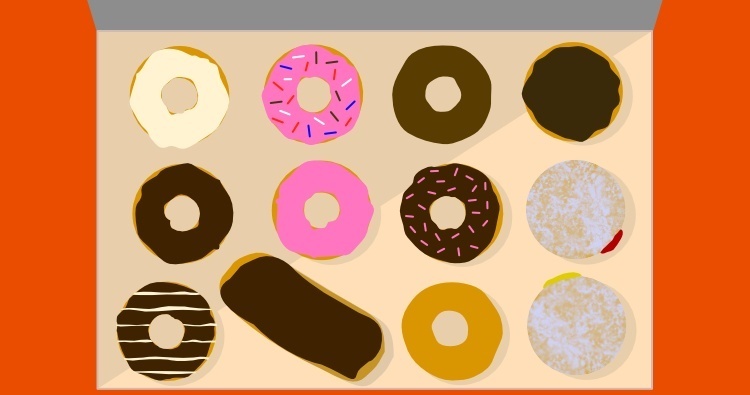It sounds delicious right?
Unfortunately though, the “Donut Hole” is something you want to avoid at all costs. Once you get in the Donut Hole, you will be stuck there the rest of the year and could easily be paying several hundred dollars per month in copays for your prescriptions.
But let’s start by looking at what it is, exactly…
More...
Get a quote on Medigap plans in your area
The Donut Hole is Also Known as the Coverage Gap
Any time someone is talking about the donut hole when they’re talking about Medicare, it has to do with Part D of Medicare. Part D is the part of Medicare which covers prescription drugs.
Part D drug coverage is not provided directly from the government like Parts A & B. Part D coverage is provided through private insurance companies. And, no matter which insurance company provides your Part D coverage, there are always 4 phases of coverage:
- Phase 1 - Deductible: the deductible is considered Phase 1 of a Part D plan. Some Part D plans have no deductible to meet. The maximum deductible any plan can have is $400 in 2017.
- Phase 2 – Initial Coverage Level: once you meet the deductible, you’re now in the Initial Coverage Level Phase where you now share in the cost of the medications (copays or coinsurance) with the insurance company.
- Phase 3 – Coverage Gap or Donut Hole: Once the total retail cost of your prescriptions reaches $3,700 in 2017, you now enter into the Donut Hole. Overall, the amount you spend on your medications will go up. The maximum you spend is 51% of the cost of a generic drug or 40% of the cost of a brand name drug in 2017.
- Phase 4 – Catastrophic Coverage: Once something called your True-Out-Of-Pocket (TrOOP) costs reach $4,950 for the year, your copays will decrease substantially compared to the Donut Hole. You’ll then be responsible for either 5% of the retail drug cost or $3.30 copay for generic/$8.25 copay for a brand name drug, whichever is cheaper.
Your TrOOP is calculated by adding:
- any amount you spend towards the deductible in Phase 1,
- any copays or coinsurance you pay in the Initial Coverage Level,
- any copays or coinsurance you pay in the Donut Hole,
- plus 50% of the retail cost of any brand name drug in the Donut Hole
When this total exceeds $4,950 for the year you will enter Phase 4.
I know, that’s really confusing. You can watch the video below to understand things a bit better by following along with a couple examples.
How to Know if You’re in the Donut Hole
You can see going through the examples that it’s almost impossible to make it into the Donut Hole if all you’re taking is generic medications. The retail cost of brand name drugs can be 10x-100x higher than generic drugs.
So, one of the main ways to avoid the Donut Hole is to switch from brand name drugs to generics. If they don’t make a generic for the brand name drug that you take, talk to your doctor to see if there is a similar drug you can take that does have a generic.
Another thing you can try to avoid it is to get free samples. Now you don’t necessarily have to get free samples for the entire year. But if you know that you’re about to get in the donut hole with your next prescription refill, see if your doctor can get you free samples just for the rest of the year.
But if you can’t avoid it, now it’s about…
Planning for the Donut Hole
Again looking at the examples above, you can see how your monthly costs vary wildly from one month to the next throughout the year, depending on what Phase you’re in. Knowing this in advance can help you budget your expenses. It can also keep your stress levels down throughout the year since you know in advance when big copays are coming, and you’re prepared for them.
Want to discuss your situation with a Medicare expert? Click the button to book a FREE personal 1-on-1 consultation.
The End of the Donut Hole?
A little light at the end of the tunnel is that the way things stand now, the Donut Hole will be done away with by 2020.
Each year from now until then, the percentage of copays that you’re responsible for in the Donut Hole goes down. You can see in the chart below how it changes each year.
In 2020 and after, the max percentage that you’ll pay in the Donut Hole for generics and brand name drugs will be 25%. It will remain with this percentage after 2020, as well.
Conclusion
Hopefully now you understand a little better what the Donut Hole is. And now you understand how being able to avoid it, or at least minimize the amount of time you spend in it, can save you hundreds of dollars per year.

